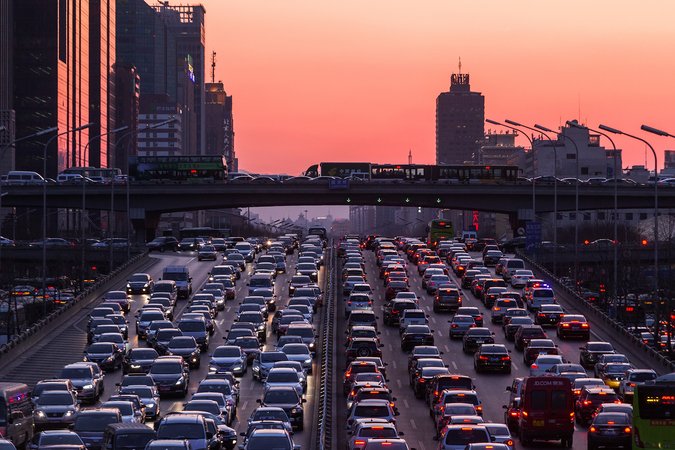Uber Improves Air Quality in the United States, with Most Benefits Felt in the Summer
A new working paper by scholars at the RFF-CMCC European Institute on Economics and the Environment finds that Uber, a popular ride-hailing company present in over 900 US counties, likely decreases the amount of ground-level ozone in the air and improves air quality as a result.
A new paper from researchers at the RFF-CMCC European Institute on Economics and the Environment (EIEE)* finds that the introduction of the popular ride-hailing company Uber has improved net air quality in the United States. The paper is the first to analyze the company’s effect on overall air quality in US urban areas.
Relying on the Environmental Protection Agency’s (EPA) air quality index—a standardized measure of several air pollutants—the authors find that by 2017, Uber’s presence in 521 counties was linked to a decrease of about 1,094 episodes of bad air quality per year.
Much of the air quality improvement occurs in the summer, leading the researchers to believe that Uber’s arrival in an area is linked to a decrease in ground-level ozone, which tends to be highest during the warmer months. The paper notes that people living in counties with Uber experience, on average, 2.2 fewer bad air quality episodes during the summer than they would have without Uber’s presence.
“Air quality has been improving across the country for the past few decades,” coauthor Luis Sarmiento said. “But our findings, which are the result of robust analysis, show that the introduction of Uber ride hailing into a county improves air quality above the level that we would expect without it. This could have significant implications for the way that we understand our changing transportation system.”
The paper makes note of several other key quantitative findings:
- On average, Uber availability decreases EPA’s maximum yearly air quality index by 10.69 units (on a scale of 0–500 units, with 0 being the healthiest and 100 the national air quality standard for moderate air pollution), or a 7.3 percent decrease over pre-Uber pollutant levels.
- After Uber is introduced to a county, residents experience an average of 2.53 fewer bad air quality days per year.
- The introduction of Uber does not reflect a change in PM2.5 or nitrogen dioxide levels but does decrease ground-level ozone’s air quality index value by 5.32 percent. This is likely because the presence of nitrogen dioxide (NO2)—a traffic-related pollutant—can degrade ozone (O3) into oxygen (O2).
The study does not try to figure out what causes the big-picture air quality change, since reasons may differ based on each city’s unique circumstances. However, previous research has shown that ride-hailing technologies can increase the number of cars on the road; replace older, more polluting vehicles; or facilitate access to public transportation.
The complexity of air pollutant interactions and the United States’ local transportation systems makes it difficult to assess how one single factor influences air quality when so many variables are involved. However, the working paper addressed these challenges by considering the bias that may arise from systemic air quality differences between urban and rural areas. It also considered that some counties were affected by forest fires, changes in power fleets, or EPA air quality violations. Under a variety of robustness tests, the results held.
“Our research finds that the introduction of Uber to America’s urban areas has a positive impact on air quality,” coauthor Yeong Jae Kim said. “But it’s important to recognize that this is only one piece of the puzzle. What do ride-hailing services do for traffic? Or equity? Or public safety? These are all questions that can, and should, be addressed with more research.”
For more, read the working paper “The Air Quality Effects of Uber” by Luis Sarmiento and Yeong Jae Kim of the RFF-CMCC European Institute on Economics and the Environment.
*EIEE is a collaboration between Resources for the Future (RFF) and the Euro-Mediterranean Center on Climate Change (CMCC). EIEE leverages both organizations to conduct research and policy analyses for European audiences. For more information, click here.
Resources for the Future (RFF) is an independent, nonprofit research institution in Washington, DC. Its mission is to improve environmental, energy, and natural resource decisions through impartial economic research and policy engagement. RFF is committed to being the most widely trusted source of research insights and policy solutions leading to a healthy environment and a thriving economy.
Unless otherwise stated, the views expressed here are those of the individual authors and may differ from those of other RFF experts, its officers, or its directors. RFF does not take positions on specific legislative proposals.
For more information, please see our media resources page or contact Media Relations and Communications Manager Annie Tastet.



